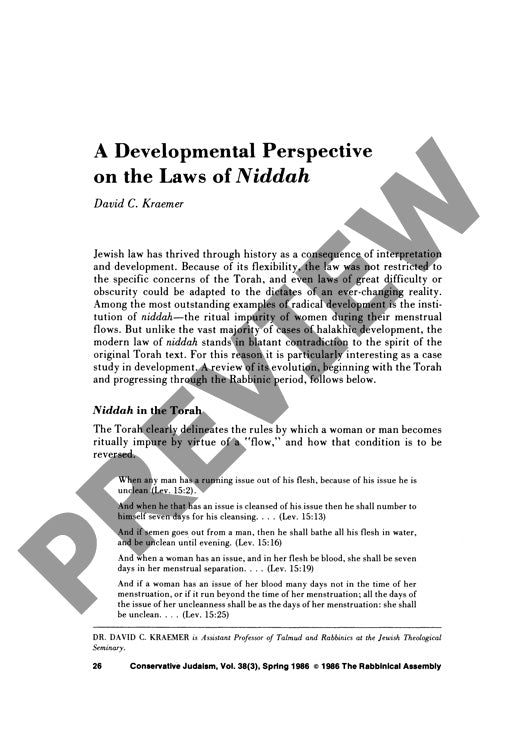A Development Perspective on the Laws Of
Couldn't load pickup availability
Jewish menstrual purity laws underwent a dramatic transformation from biblical simplicity to rabbinic complexity, revealing how cultural anxieties and interpretive expansion can fundamentally alter religious practice. While the Torah established menstruation as a natural process requiring only seven days of separation, rabbinic authorities gradually constructed an artificial eighteen-day cycle that doubled the period of required abstinence. Through analysis of primary sources including Leviticus, Talmudic literature, and medieval commentaries, two distinct interpretive traditions emerge: Maimonides' literal reading created an inflexible system at odds with biological reality, while Nachmanides offered greater flexibility but introduced new stringencies based on fears of miscounting and blood classification. Popular concerns, particularly blood taboos documented in Rabbi Zeira's observations about the "daughters of Israel," profoundly influenced this halakhic development beyond scriptural intent. The evolution of these laws exemplifies a broader pattern where rabbinic desire for ritual precision transformed relatively lenient biblical regulations into more restrictive systems - in this case, extending the monthly period of abstinence to fourteen days. This transformation demonstrates how halakhic development, though typically responsive to community needs, can sometimes diverge significantly from Torah legislation's original spirit through the combined forces of interpretive expansion and cultural influences.

More Information
-
Physical Description
-
Publication Information
Published 1986
ISBN
-
Publication Credits
David Kraemer

